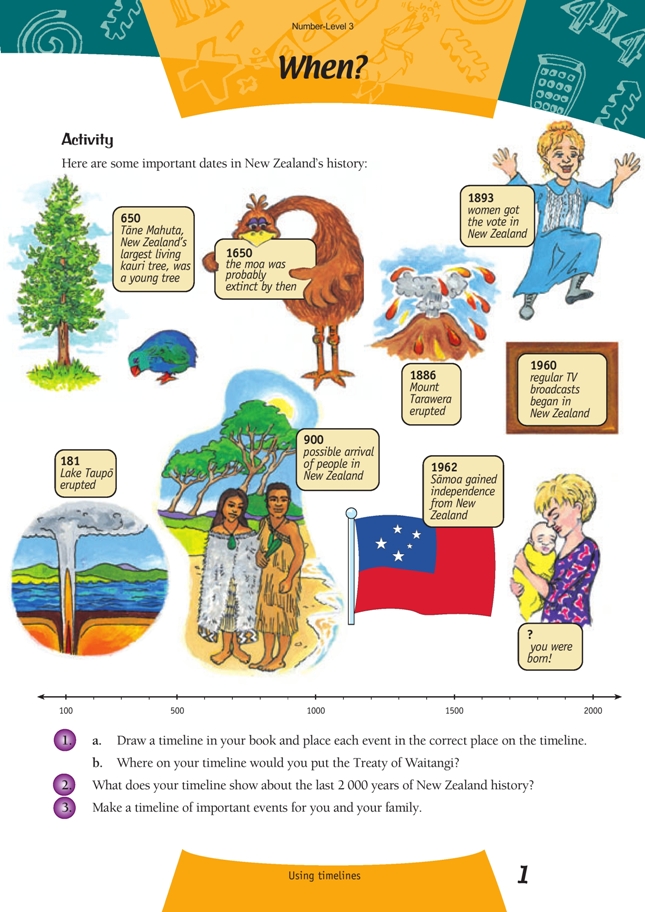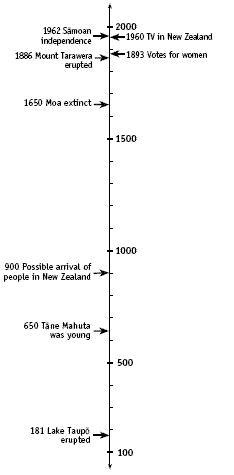This is a level 3 number activity from the Figure It Out series. It relates to Stage 6 of the Number Framework.
A PDF of the student activity is included.
Click on the image to enlarge it. Click again to close. Download PDF (262 KB)
order numbers in the thousands
This activity uses a timeline showing some aspects of New Zealand history as a context for recognising and ordering numbers up to four digits in size. Students need to understand that the range of dates chosen for this timeline represents only a small fraction of time. They should also understand that time did not start at 100 AD.
Question 1 may be introduced by brainstorming the approximate dates of events in world history known to students and ordering these in sequence. The following dates may help keep the timeline in perspective:
• Dinosaurs vanished approximately 65 million years ago.
• The Stone Age lasted from about 3 000 000 BC to 8000 BC.
• The Bronze Age ranged from 1900 to 500 BC.
• The Giza pyramids and the Sphinx were built about 2500 BC.
• Alexander the Great was born in 356 BC and died in 323 BC.
• Julius Caesar was born in 100 BC and was assassinated in 44 BC.
(These last two facts can be used to show how we count back down to 1 when using BC dates before we count forward again with AD dates.)
• The ancient Roman city of Pompeii was destroyed by the volcanic explosion of Vesuvius in 79 AD.
Timelines can be different from number lines because dates do not have to be marked on the timeline in regular intervals (although the timeline in this exercise does lend itself to regular spacing of dates).
There is no date between 1 BC and 1 AD, but a number line would have to have a 0 between –1 and +1. (This historical anomaly is the reason that mathematicians say that the second millennium finishes only at the end of 2000 AD. The first millennium didn’t start until 1 AD as there was no year 0.)
Question 2 is open-ended. Students who need prompting may be helped by questions like:
“Which fraction of the timeline shows events about people?”
“Why can’t we find many people events in the first quarter of the timeline?”
“Can you prove that some plants live longer than people?”
“What other volcanoes or earthquakes could we put on the timeline?”
(The students could look up dates for the Rangitoto eruption, the Napier earthquake, the Murchison earthquake, and some of the Ruapehu eruptions.)
Students could add these dates to the timeline as well as other dates that are important for them, such as when they started school or when brothers and sisters were born.
Answers to Activity
1. a. Your timeline could look like this:
b. The Treaty of Waitangi was signed in 1840, so it would come before 1886 on the
timeline.
2. Answers will vary. They could include comments on aspects such as the life span of plants or fewer people-related events early in the timeline.
3. Answers will vary.

